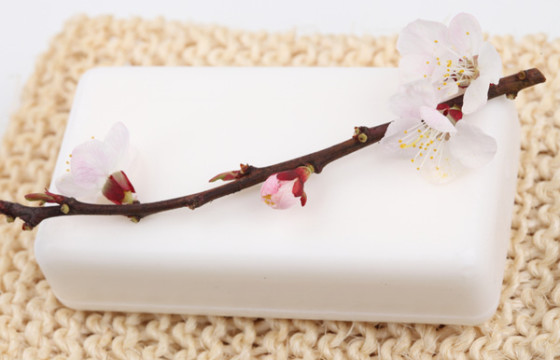Not quite ready to tackle making soap: Here are some steps to get you started

If you haven’t tried making soap yet, maybe you’re looking for a few intermediate steps that can help you along the way.
Many people are afraid to take that first step into soap making because of the big cautionary notes about using lye. After all, it is a caustic chemical that can be extremely dangerous if not handled properly. What most fail to realize is that using lye is no more dangerous than using liquid drano to open a clogged drain. The same cautions apply.
· Always wear rubber gloves
· Use protective eyewear such as goggles
· Avoid directly inhaling the fumes
· Make certain to add the lye to the water, not the other way around.
· Pitchers, spoons etc. should be used exclusively for soap making and never re-used for any other purpose because of possible contamination.
If you’re still a bit nervous about taking that first step, perhaps you need to a gradual introduction to skin care. After all, soap is not the only product you use, and learning some of the natural alternatives to those high priced skin care products may be just the incentive you’re looking for.
For instance, if you happen to be anything like me, you probably enjoy those wonderful after-bath oils that leave your skin feeling like silk. The problem is they cost a fortune. However, if you read the label carefully, you will realize that these products are made up of oils that you can easily purchase at your local grocery or health food store at a fraction of the cost.
After-Bath Oil:
· 3 Parts Extra Virgin Olive Oil
· 1 Part Sweet Almond Oil
Blend these oils together in a convenient dispensing container. Add fragrance if desired such as an essential oil or soap making fragrance; both available at most craft and health food stores. Shake well and enjoy.
So now that you’re in love with your new after-bath oil, let’s move on to making your own custom bath salts. Bath salts are very easy to mix and can be custom-designed to meet your needs. Bath salts neutralize the acids on your skin so the fragrance will cling to the body. Salts such as Dead Sea Salt and Epsom Salt are soothing to the skin and are excellent for reducing inflammations and muscular aches. Please remember, this is a very basic recipe to get you started. There are as many variations as there are herbs on the planet and only your imagination will limit the types of salts you can create.
Bath Salts:
· 2 Cups of Epsom Salt
· 1 Cup of Dead Sea Salt or Baking Soda
· 2 Tbsp. of Glycerine
· ½ cup of dried, crushed herbs such as lavender (optional)
· 10-15 drops of fragrance (optional)
· 5 drops of liquid colorant if desired
Place the measured salts in a large bowl and mix well. Take out about ½ cup and place in a small bowl. Add the drops of fragrance and coloring to this smaller amount and mix well. Add the blended mixture to the large bowl a little at a time until you are satisfied with the color and strength of scent. Place the salts in a jar with a tight fitting lid. Store and shake the mixture every day for one week before packaging to prevent clumping. Add ¼ – ½ cup of your salts to a warm running bath, sit back, relax and enjoy.







